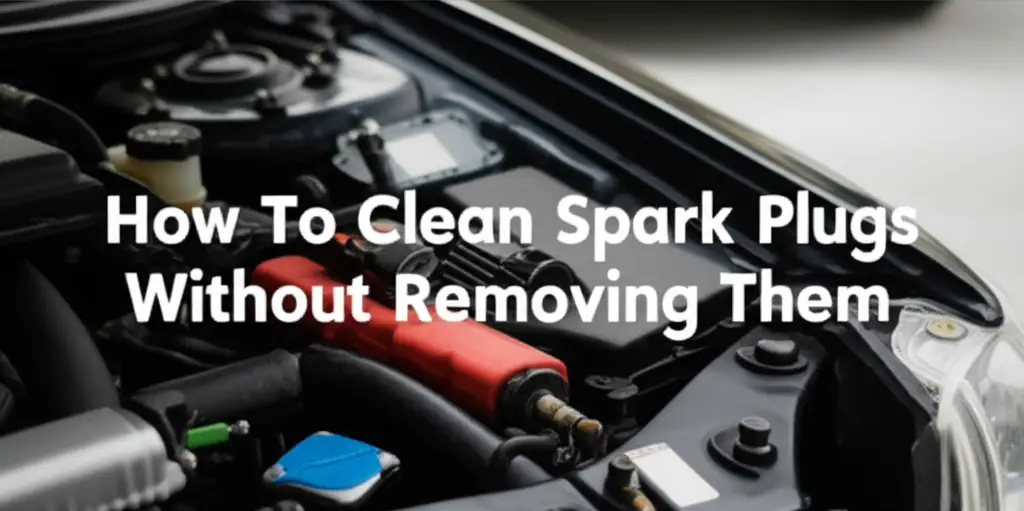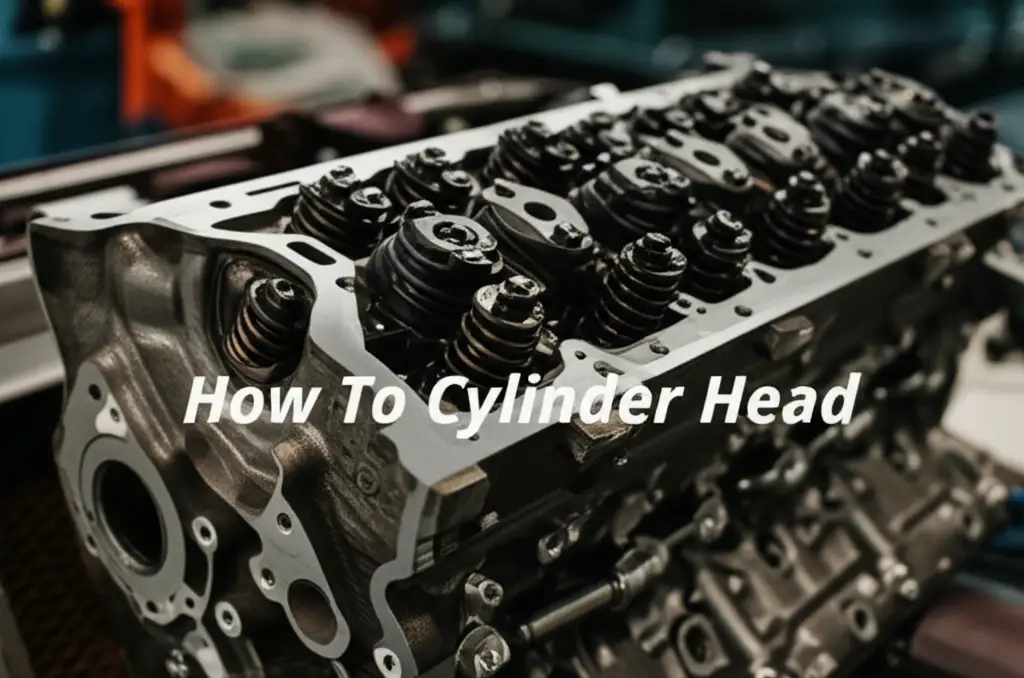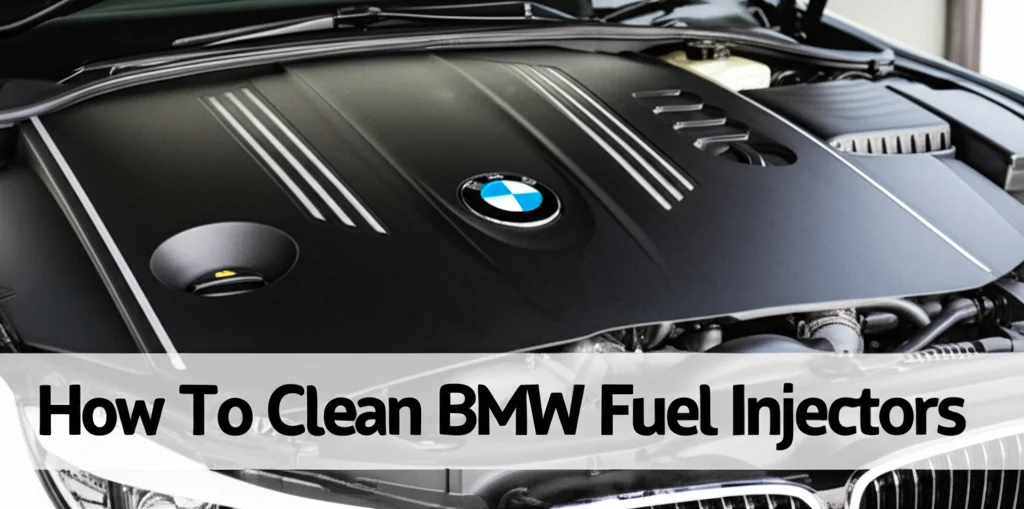· Automotive Maintenance · 14 min read
How To Clean Fuel Injectors With Seafoam

Optimize Your Ride: How to Clean Fuel Injectors with Seafoam
Have you noticed your car feels a bit sluggish? Maybe your gas mileage is not as good as it once was. Dirty fuel injectors are often the culprit. They can cause poor engine performance and increased fuel consumption. Fortunately, a simple solution exists. You can use Seafoam to effectively clean fuel injectors. This guide will show you how. We cover the benefits, how Seafoam works, and a step-by-step process for different application methods. Get ready to restore your engine’s power and efficiency.
Takeaway:
- Seafoam offers an accessible way to clean fuel injectors and improve engine function.
- You can apply Seafoam through the fuel tank, directly via vacuum lines, or by spraying into the intake.
- Proper application ensures safety and maximizes cleaning results.
- Regular maintenance with Seafoam prevents carbon buildup and maintains fuel efficiency.
- Always follow product instructions and safety guidelines for the best outcome.
Seafoam cleans fuel injectors by dissolving carbon deposits and varnish. You add it to the fuel tank, crankcase, or directly into the engine’s vacuum lines. This helps restore spray patterns, improve combustion, and enhance overall engine efficiency.
Understanding Fuel Injectors: Why Cleaning Matters
Your car’s fuel injectors play a vital role. They deliver fuel to the engine’s combustion chambers. They atomize the fuel into a fine mist. This mist mixes with air, allowing for efficient combustion. This process generates power for your vehicle. Over time, carbon deposits and varnish build up on these injectors. These deposits come from fuel impurities and combustion byproducts.
When deposits form, the injector spray pattern becomes irregular. It no longer delivers a fine, even mist. Instead, it might spray larger droplets or an uneven pattern. This leads to incomplete combustion. Incomplete combustion means less power from your engine. You might notice hesitation, rough idling, or reduced acceleration. Your engine also burns more fuel to achieve the same power output. This results in worse gas mileage.
Cleaning your fuel injectors restores their proper function. It ensures fuel sprays correctly. This improves fuel atomization and combustion efficiency. A clean fuel system directly impacts your car’s overall performance. It can restore lost horsepower and improve fuel economy. It also helps reduce harmful emissions. Regular cleaning is a simple, proactive step. It keeps your engine running smoothly and efficiently. This extends the life of your engine components.
What is Seafoam and How Does it Clean?
Seafoam Motor Treatment is a popular multi-purpose additive. Many car owners use it for engine and fuel system maintenance. It contains petroleum-based ingredients. These ingredients work to liquefy harmful deposits. Seafoam targets carbon, varnish, and sludge. These contaminants often accumulate in the fuel system and engine. Seafoam does not contain harsh chemicals. It is safe for all types of gasoline and diesel engines. This makes it a trusted choice for DIY car care.
Seafoam cleans fuel injectors by dissolving these deposits. When you add it to your fuel tank, it mixes with the gasoline. It then travels through the fuel lines to the injectors. Its cleaning agents break down the varnish and carbon buildup. These deposits restrict fuel flow and disrupt spray patterns. Seafoam helps remove them. This restores the injector’s ability to deliver a fine, even fuel mist. This leads to better fuel atomization. Improved atomization results in more complete combustion.
Beyond injectors, Seafoam cleans other parts too. It can clean carburetor jets, intake valves, and combustion chambers. It also works as a fuel stabilizer. This helps keep fuel fresh during storage. Seafoam can even clean oil sludge when added to the crankcase. Its versatility makes it a valuable product for comprehensive engine care. Its primary action for injectors is breaking down deposits. This returns them to optimal working condition.
Preparing Your Vehicle for Seafoam Treatment
Before you clean fuel injectors with Seafoam, proper preparation is important. This ensures a safe and effective treatment. First, gather all necessary tools and materials. You will need the Seafoam product itself. Check your vehicle’s owner’s manual for specific recommendations. It might suggest certain fuel types or engine conditions for additives. Safety is always the first concern. Work in a well-ventilated area. Engine fumes can be harmful. Consider wearing safety glasses and gloves.
Next, choose your application method. Seafoam offers flexibility. You can add it to the fuel tank. This is the easiest method. Or, you can add it directly into the engine’s vacuum lines. This offers a more concentrated cleaning. A third option is spraying it directly into the air intake. This method requires a special tool. Each method has specific steps. We will cover these in detail.
Make sure your engine is warm before applying Seafoam. A warm engine helps the Seafoam circulate and clean more effectively. Do not let the engine overheat. A good practice is to drive your car for 15-20 minutes first. This brings the engine to its normal operating temperature. Also, check your fuel level. For fuel tank application, it’s best to add Seafoam to a nearly empty tank. Then, fill the tank with fresh fuel. This helps mix the Seafoam properly. Always read the specific instructions on your Seafoam can. Following the product guidelines ensures you get the best results.
Method 1: Cleaning Fuel Injectors Via the Fuel Tank
Cleaning fuel injectors by adding Seafoam to the fuel tank is the simplest method. This approach is ideal for routine maintenance. It also works well for mild carbon buildup. It does not require special tools. Anyone can perform this task. This method allows the Seafoam to slowly clean the entire fuel system. It cleans the fuel lines, fuel pump, and injectors. You also do not need to remove any parts from your vehicle. If you are looking for ways to clean parts without removal, you can learn more about how to clean fuel injectors without removing them.
Follow these steps for optimal results:
- Check Fuel Level: Start with your fuel tank nearly empty. This is not strictly necessary but helps concentrate the Seafoam. It ensures it mixes well with the fresh fuel you add next.
- Add Seafoam: Pour the recommended amount of Seafoam directly into your vehicle’s fuel tank. The standard ratio is typically one can (16 oz) for every 10-20 gallons of fuel. Check the product label for the exact dosage for your vehicle.
- Refuel: After adding Seafoam, fill your fuel tank with fresh gasoline. This helps the Seafoam mix thoroughly. It also ensures it gets distributed throughout the fuel system.
- Drive Normally: Drive your vehicle as you normally would. The Seafoam will circulate with the fuel. It will begin to dissolve carbon deposits and varnish. You might notice a slight change in engine sound or performance initially. This is normal. It indicates the cleaning process has begun.
- Observe Results: Continue driving until the treated fuel is mostly used up. You should start to feel improvements. These include smoother idling, better acceleration, and improved fuel efficiency. Some improvements might be subtle. For instance, your car might just feel more responsive. This method cleans the entire fuel system, including the fuel filter. If you want to know more about fuel filter maintenance, you can check out how to clean fuel filter without removing it.
This method is safe for regular use. Many recommend using it every 3,000-5,000 miles. Or you can use it just before an oil change. It helps maintain a clean fuel system.
Method 2: Directly Applying Seafoam for Deeper Cleaning
For more stubborn deposits or a more intensive cleaning, direct application is effective. This method delivers a concentrated dose of Seafoam directly to the engine’s intake system. It targets carbon buildup on intake valves and fuel injector tips more aggressively. This approach requires a bit more mechanical comfort. You will interact directly with engine components. Always exercise caution. Ensure the engine is warm before you begin.
There are two primary ways to apply Seafoam directly:
H3: Using the Engine’s Vacuum Line
This method sends Seafoam through a vacuum line directly into the intake manifold. This allows it to clean the intake valves and the backside of the fuel injectors.
- Locate a Vacuum Line: Find a main vacuum line connected to the intake manifold. A common choice is the brake booster vacuum line. Ensure it is a direct vacuum source for the intake manifold.
- Start Engine: Start your engine and let it reach normal operating temperature.
- Slowly Feed Seafoam: With the engine running, carefully disconnect the vacuum line. Slowly draw the Seafoam into the line. Do not pour it too fast. The engine may stall if you add it too quickly. Draw about 1/3 to 1/2 of a can of Seafoam.
- Engine Stall and Soak: After drawing in the Seafoam, the engine may stall. This is expected. If it does not stall, turn the engine off. Let the engine sit for 5-15 minutes. This allows the Seafoam to soak into the carbon deposits.
- Restart and Drive: After the soak time, restart the engine. It may produce a lot of white smoke. This is normal. It indicates that carbon deposits are burning off. Drive the car for at least 15-20 minutes at varying speeds. This helps clear out the remaining deposits.
H3: Spraying Directly into the Air Intake
This method uses a spray nozzle to deliver Seafoam directly into the throttle body. It is often done while the engine is running.
- Locate Air Intake: Find your engine’s air intake or throttle body. You might need to remove the air filter housing or loosen an intake tube clamp.
- Start Engine: Start the engine and bring it to normal operating temperature.
- Spray Seafoam: With the engine running (and someone potentially revving it slightly to prevent stalling), spray Seafoam directly into the throttle body. Use short bursts. Avoid flooding the engine.
- Engine Stall (Optional Soak): If the engine stalls, allow it to sit for 5-15 minutes, similar to the vacuum line method. If it does not stall, continue spraying until about 1/3 to 1/2 a can is used.
- Restart and Drive: Restart the engine if it stalled. Expect white smoke. Drive the car for an extended period to fully burn off the deposits.
Direct application often yields more immediate results for cleaning severe buildup. Always follow specific instructions on the Seafoam product label.
Method 3: Seafoam in the Crankcase for Engine Sludge
While the primary focus of this article is cleaning fuel injectors, Seafoam offers another benefit. You can add it to your engine’s crankcase. This targets oil sludge and varnish buildup. These deposits accumulate inside the engine. They can restrict oil flow and reduce lubrication. This method helps clean internal engine components. It prepares them for a fresh oil change.
Adding Seafoam to the crankcase works differently than adding it to the fuel. It mixes with your engine oil. Its cleaning agents then circulate throughout the engine’s lubrication system. They dissolve and suspend sludge and varnish. These contaminants then drain out with the old oil during an oil change. This helps keep oil passages clear. It ensures proper lubrication for all moving parts. This improves engine efficiency and longevity.
Here’s how to use Seafoam in the crankcase:
- Check Oil Level: Ensure your engine oil level is appropriate. Do not overfill the crankcase.
- Add Seafoam: Pour the recommended amount of Seafoam into your engine’s oil fill port. Typically, it is about 1 ounce per quart of oil in your crankcase. Check the Seafoam label for precise dosing instructions.
- Drive for a Short Period: Drive your vehicle for 100-300 miles. Or you can drive it for a few days before your next scheduled oil change. This allows the Seafoam to circulate and clean effectively. Do not leave Seafoam in your crankcase for extended periods. It is designed for short-term cleaning before an oil change.
- Perform Oil Change: After the recommended driving period, perform a complete oil and oil filter change. The old oil will contain the dissolved sludge and varnish.
This method does not directly clean fuel injectors. However, maintaining a clean engine internally contributes to overall vehicle health. A healthy engine supports efficient fuel delivery. This is an extra step for complete engine care. Remember, this application is separate from fuel injector cleaning methods. Always use the right application for the specific problem you are trying to solve.
Post-Treatment Tips and Maintenance
After you clean fuel injectors with Seafoam, some post-treatment steps are beneficial. These steps help ensure the maximum benefits from the cleaning process. They also help maintain your engine’s health.
- Drive Your Vehicle: After any Seafoam treatment, especially direct applications, drive your car. Drive it for at least 15-20 minutes. Include both city and highway driving. This helps burn off any remaining deposits loosened by the Seafoam. You might see some white smoke from the exhaust. This is normal. It means carbon is clearing out.
- Observe Performance: Pay attention to your vehicle’s performance. You should notice improvements. These can include smoother idling, better throttle response, and improved acceleration. Your engine might run quieter. You could also see an increase in fuel economy over time.
- Check Engine Light: If your check engine light comes on after treatment, it is rare but possible. It often relates to oxygen sensor readings changing due to deposit removal. The light may clear on its own after a few driving cycles. If it persists, consult a mechanic.
- Consider an Oil Change (If used in Crankcase): If you added Seafoam to your crankcase, perform an oil and filter change shortly after. This removes the suspended sludge and dirty Seafoam.
- Regular Maintenance Schedule: Incorporate Seafoam into your regular maintenance routine. Using it every 3,000 to 5,000 miles or with every oil change can prevent future buildup. This maintains optimal engine performance. Consistent use keeps your fuel system clean. It avoids the need for more intensive cleaning in the future.
- Monitor Fuel Economy: Track your fuel economy before and after treatment. A noticeable improvement is a good indicator of successful cleaning. This shows your fuel injectors are now working more efficiently.
By following these tips, you can maximize the positive effects of Seafoam. You can also ensure your engine remains in top condition. Regular, proactive maintenance keeps your car running smoothly and extends its lifespan.
FAQ Section
How often should I use Seafoam to clean fuel injectors?
For routine maintenance, use Seafoam every 3,000 to 5,000 miles. You can also use it with every oil change. If your vehicle shows signs of dirty injectors, like rough idling or poor gas mileage, an immediate treatment is beneficial. Consistent use helps prevent carbon buildup. This keeps your fuel system running efficiently over time.
Can Seafoam damage my engine?
No, Seafoam is generally safe for engines. It contains no harsh chemicals or abrasives. It is designed to dissolve carbon, varnish, and sludge gently. Using it according to the product’s instructions ensures safety. Overdosing or improper application methods are rare but can lead to temporary issues, such as excessive smoke, but no lasting damage.
What are the signs of dirty fuel injectors?
Common signs include a rough or erratic idle, engine misfires, reduced acceleration, and a decrease in fuel efficiency. You might also notice a strong fuel odor or increased exhaust emissions. If your car hesitates or feels sluggish, dirty injectors could be the cause. Cleaning them often resolves these issues.
Is Seafoam safe for all types of engines?
Yes, Seafoam is safe for all types of gasoline and diesel engines. This includes cars, trucks, motorcycles, and marine engines. It works with both carbureted and fuel-injected systems. Its petroleum-based formula makes it compatible with various fuel and oil types. Always check the specific product label for any unique recommendations.
How long does it take for Seafoam to work?
When added to the fuel tank, Seafoam works gradually. Improvements might be noticed after driving 50-100 miles. With direct application (via vacuum line or spray), results can be more immediate. White smoke from the exhaust indicates the cleaning process is active. Full benefits often appear after driving for a full tank of treated fuel.
Do I need special tools to use Seafoam?
For fuel tank application, no special tools are needed. You just pour it in. For direct application via a vacuum line, you might need pliers to remove a hose clamp. For spraying into the air intake, a specialized Seafoam spray tool with a hooked nozzle is helpful but not strictly required. Basic hand tools are often sufficient for these methods.
Conclusion
Cleaning your fuel injectors with Seafoam is a smart decision for any vehicle owner. This simple maintenance task can significantly improve your car’s performance. It helps restore lost power, smooth out rough idles, and boost fuel efficiency. By dissolving harmful carbon and varnish deposits, Seafoam ensures your engine receives fuel optimally. This leads to more complete combustion and a cleaner running engine.
Whether you choose the easy fuel tank method or a more direct application, Seafoam offers a proven solution. Regular use of Seafoam as part of your vehicle’s maintenance routine helps prevent future problems. It extends the life of your fuel system components. This proactive approach saves you money on potential repairs down the road. Take control of your car’s health today. Give your engine the clean it deserves. Visit BeACleaner.com for more valuable tips on maintaining your vehicle and keeping it in top condition.
- Seafoam
- fuel injector cleaner
- engine performance
- DIY car maintenance
- fuel system
- engine cleaning




